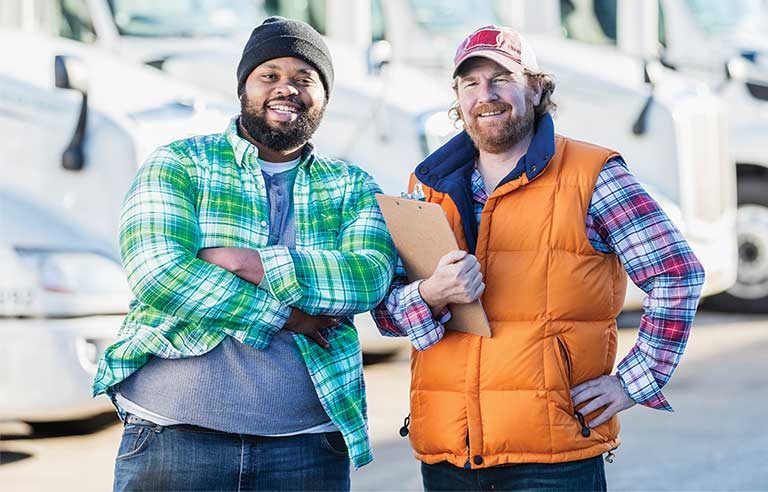Share the road safely
What professional truck drivers want you to know

Photo: kali9/iStockphoto
Imagine your 4,000-pound passenger vehicle colliding with an 80,000-pound truck.
That’s how Alan Boyd, a professional truck driver for more than four decades, frames part of the roadway safety talks he has with high school students.
“That’s 20 times the weight of your vehicle,” Boyd says. “If you’re involved in a crash, it would be like a 200-pound man trying to wrestle a 4,000-pound man.”
Here’s what Boyd and other semi-truck drivers want you to know about safely sharing the road with them.
Pass with purpose. Always pass on the left, where a truck driver’s blind spot is much smaller than on the right. And remember: “It’s OK to be in the blind spot,” Boyd said. “It’s not OK to stay there.”
After you complete the pass, leave plenty of space between your vehicle and the truck when returning to the same lane.
Practice friendly merging. Picture this: You’re merging onto a highway and, to allow you in, a truck driver moves over to the left lane. What should you do next? “If a truck lets you out, slow up a little bit,” Boyd said. “Let it back over so that everyone can pass on the left where it’s safe.”
If you speed up and don’t allow the truck – which likely has a speed limiter that’s set at 65 mph – to move back into the right lane, other drivers will start to pass the truck in the right lane. “Now everybody keeps passing me on the right and we all sit there like a big roadblock” in the left lane.
Don’t tailgate. At 55 mph, your vehicle is traveling 121 feet a second, the National Highway Traffic Safety Administration says. The closer you’re following behind a large truck, the less time you have to take evasive action, such as avoiding debris on the road, if needed. Commercial trucks sit higher off the ground than your vehicle.
“Because we are so high, we can straddle a lot of things (on the road),” Boyd said. “I’ve seen everything from buckets to ladders to dead animals. By the time you see it, you’re not going to have a chance to avoid it.”
If you’re driving below 40 mph, the Federal Motor Carrier Safety Administration recommends leaving at least one second for every 10 feet of vehicle length. For a typical tractor-trailer, this would mean leaving four seconds between you and the leading vehicle. For speeds over 40 mph, you should leave one additional second.
Watch for wide turns. Large trucks need extra space and time to navigate turns, especially on city streets. Give them plenty of room and be patient. Sometimes truck drivers need to swing the truck to their left to safely make a right turn. Help them out by waiting a few seconds for a large bus or truck ahead of you to complete a turn before you proceed.
Slow down. If you’re traveling in bad weather conditions, adjust your following distance and speed to appropriately match weather conditions, road conditions, visibility and traffic. The FMCSA suggests doubling your following distance in adverse conditions.
“Slow down a little bit,” Boyd said. “Give us a little bit more room. By all means, use that turn signal and use it early. The more time we have to react, the better we are.”
Keep your eyes on the road. When you’re behind the wheel, Boyd said, make sure to be attentive so everyone gets home safe.
“Everybody’s got the same goal in mind: to make it home every night,” he said. “My most important trip of the day or the week or the year is that trip home. Respect everybody. Allow me and everybody around you to make their most important trip.”
Post a comment to this article
Safety+Health welcomes comments that promote respectful dialogue. Please stay on topic. Comments that contain personal attacks, profanity or abusive language – or those aggressively promoting products or services – will be removed. We reserve the right to determine which comments violate our comment policy. (Anonymous comments are welcome; merely skip the “name” field in the comment box. An email address is required but will not be included with your comment.)
